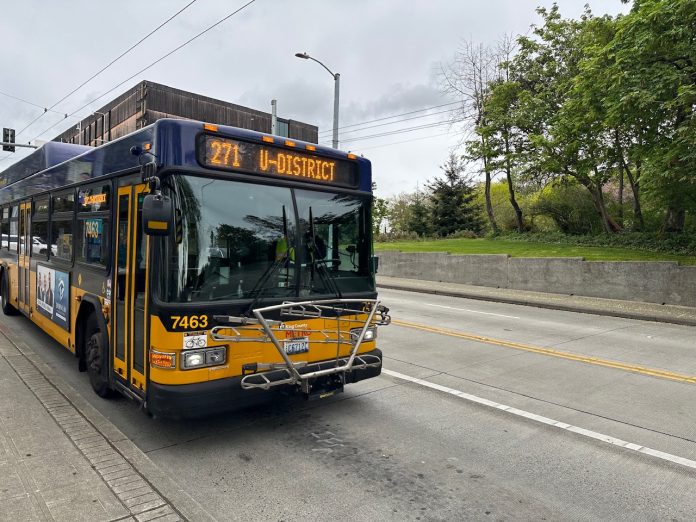King County Metro and Sound Transit’s proposed bus restructure for the Eastside (dubbed “East Link Connections”) has some deficiencies, particularly from a cross-lake standpoint. Centered around reallocating service hours on the Eastside to more local service and direct connections to Link stations in Bellevue and Redmond, the proposal could achieve some highly worthy goals. But proposed consolidation strategies cutting SR-520 cross-lake bus service would leave many riders underserved.
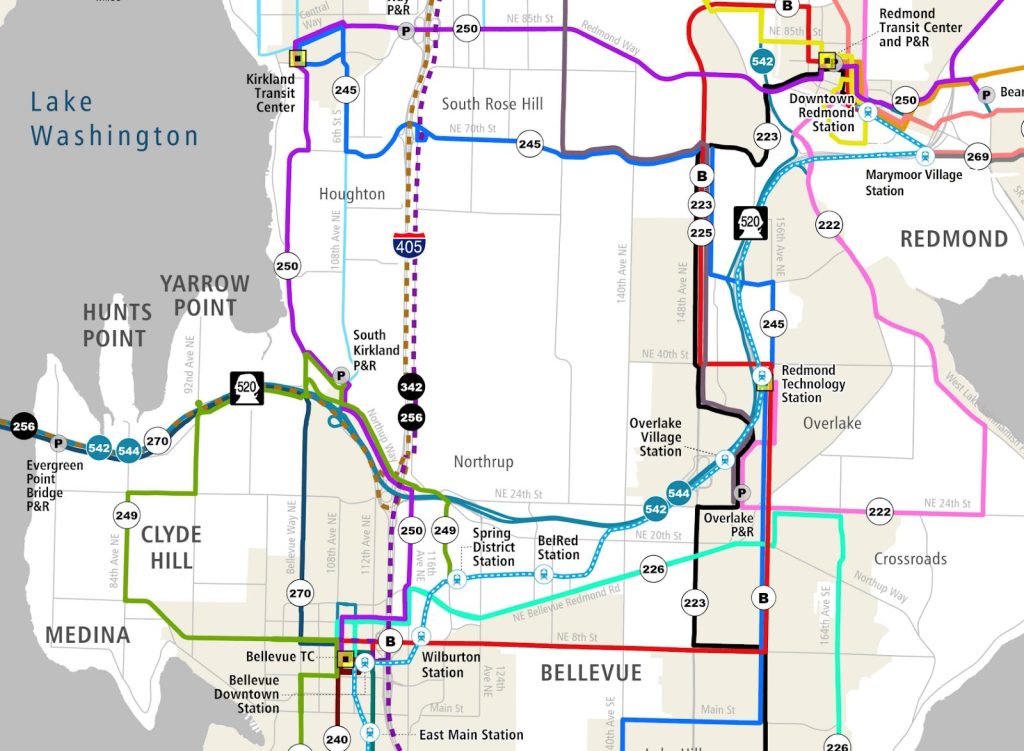
The bus restructure proposal is predicated on directing most transit capacity between Seattle and the Eastside via I-90 when the East Link Extension fully opens in late 2025 or early 2026. This is because Link 2 Line service will continue south of Bellevue to Mercer Island, hook around through Chinatown-International District and Downtown Seattle, and then continue onward to Northgate and Lynnwood.
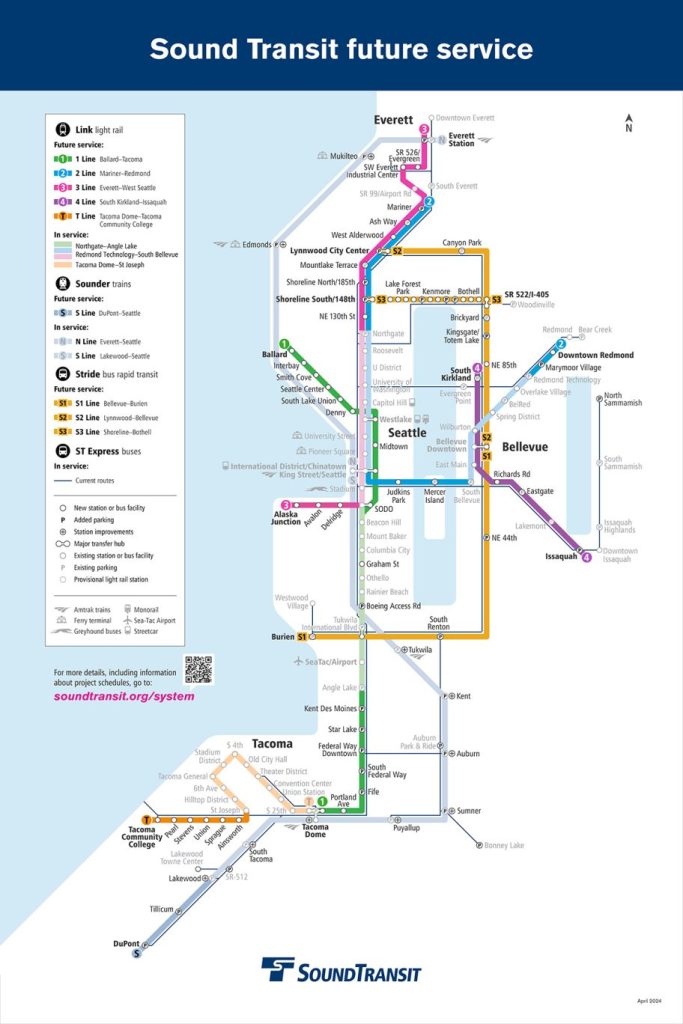
For many Seattle-Eastside trips, this hook via I-90 will be a highly time-competitive choice for transit riders. But for transit riders traveling to and from areas north of the Ship Canal, the 2 Line will not be a time-competitive choice. Cross-lake buses along SR 520 make for a better option when connecting to light rail or traveling between certain destinations.
Regrettably, Metro and Sound Transit’s proposed restructure would penalize many common cross-lake trips today if it remains unchanged. There are two key problems with the proposal, which affect Bellevue and Redmond.
| 2 Line Travel Time in Minutes Between Origin and Destination | |||
| Origin/Destination | Bellevue Downtown | Spring District | Redmond Technology |
| International District/Chinatown | 20 | 24 | 28 |
| Westlake | 25 | 29 | 33 |
| Capitol Hill | 27 | 31 | 39 |
| University of Washington | 30 | 34 | 42 |
| U District | 32 | 36 | 44 |
In the case of Bellevue, Metro is proposing poor frequencies and span of service on the new Route 270 — a revised replacement of Route 271.
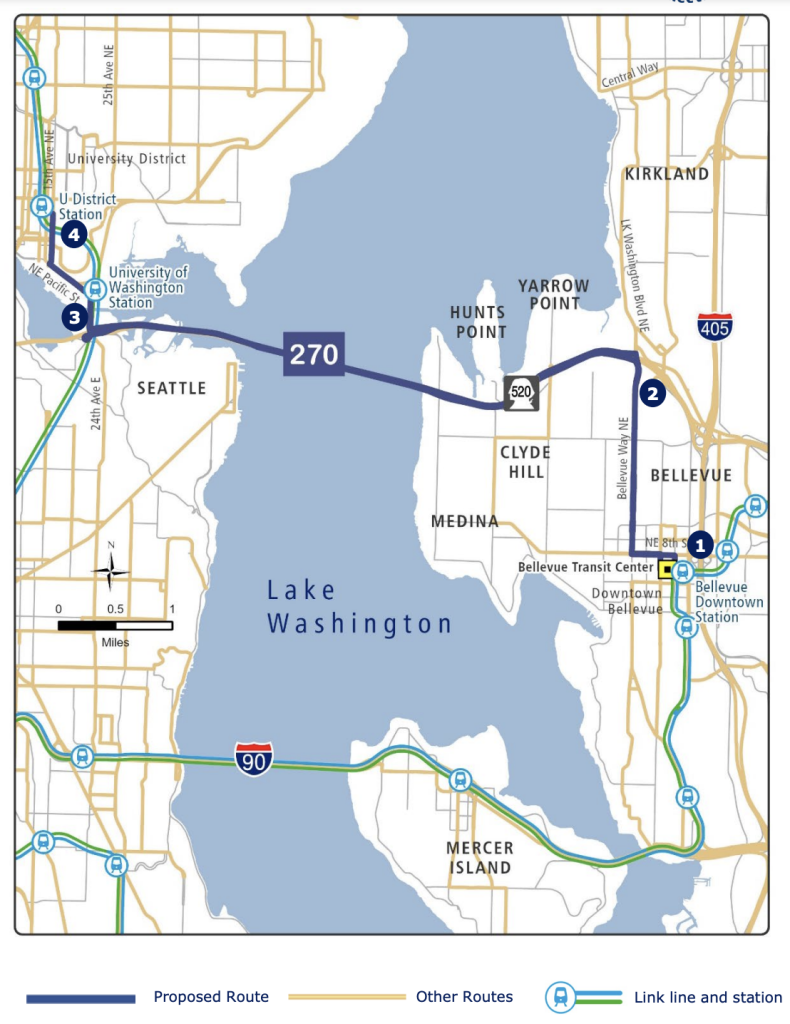
Ridership on the Route 271 corridor has remained strong in the post-pandemic environment and routinely is overcrowded as students and workers flood buses that travel between the University of Washington and Downtown Bellevue. Part of the problem is that Metro typically uses 40-foot buses on the route. But even if 60-foot buses are uniformly deployed, demand might outpace capacity since the two nodes offer good transit connections to other places and are popular destinations in their own right. The route has been begging for serious investment for years with the latest annual system evaluation estimating a need for another 40,000 or so annual service hours.
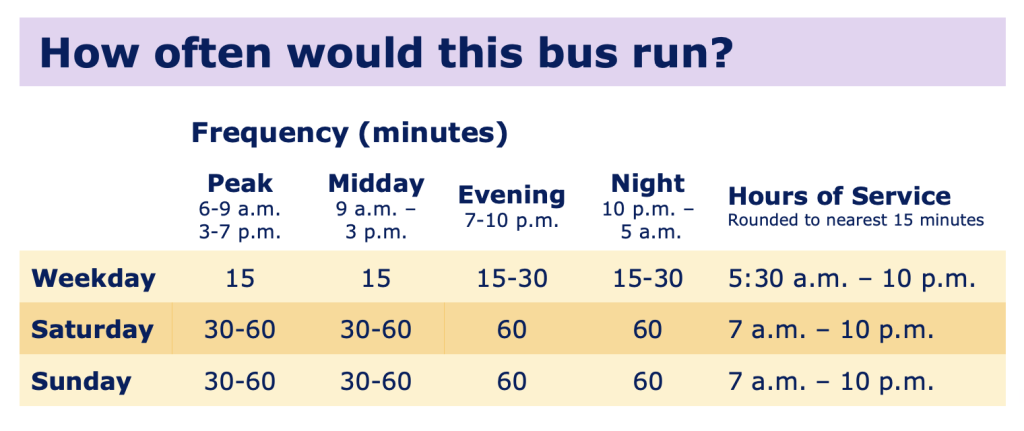
Travel time between the University of Washington and Bellevue Downtown stations is typically 17 to 22 minutes on Route 271. The new route may be slightly less, but in either case travel time by bus will almost always be faster than Link outside of the most congested periods. That makes future transfers between Link and Route 270 an attractive choice, especially for riders who catch a 1 Line train on their journey.
Metro’s proposal, however, would double down on underserving the corridor by:
- Reducing peak-hour frequencies on weekdays;
- Not increasing off-peak frequencies on weekdays;
- Not increasing weekend frequencies; and
- Forgoing expanded span of service all days of the week to match Link hours of operation.
Dense urban corridors deserve high quality transit, but Metro is treating these urban destinations like they’re a suburban destination pair instead.
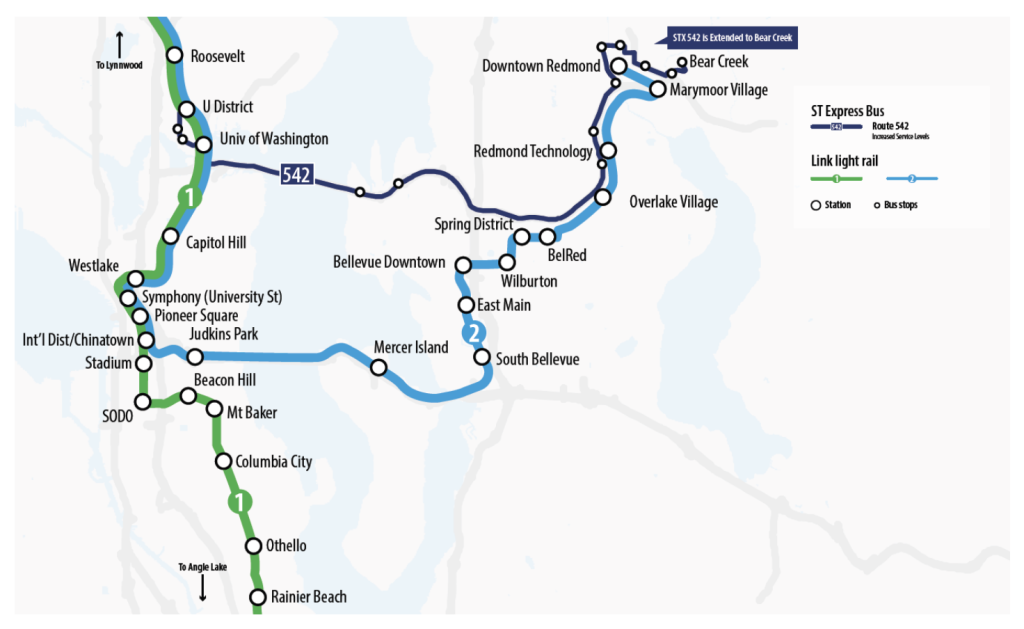
Separately, Route 542 is slated to continue providing service between the U District and Redmond, but proposed frequencies are insufficient. While there are plans to beef up weekday and weekend daytime service with trips as frequently as every 15 minutes, evening and nighttime service would remain subpar. Half-hourly and hourly service is woeful given that Sound Transit will be running 2 Line service much more frequently during those periods.
Meanwhile, the SR 522 corridor is less dense and destination-heavy than either Route 542 or new Route 270 and yet planned bus frequencies are much higher. Sound Transit intends to improve service along SR 522 to bus rapid transit lite in the next four or so years, with frequency planned to be around every 10 minutes, which is more in line with Link. Routes 542 and 270 could benefit from similar frequencies.

The rapid nature of Route 542 has the potential to push ridership much higher once Route 545 service comes to an end. Travel time on the Route 542 corridor is fairly short, ranging from 15 to 23 minutes between the University of Washington and Redmond Technology stations, depending upon time of day and direction. That’s about half the time it would take on Link via I-90. Some destination pairs like Capitol Hill and Downtown Seattle to Redmond would also be best served by traveling north by Link to University of Washington station and then transferring to Route 542, given the speed of the route.
Improving Route 542 service is not a difficult project. Sound Transit has ample funding and capacity to earmark more service on the route since the agency plans to eliminate Route 545 service in favor of Route 542.
Metro and Sound Transit still have time to get the East Link Connections bus restructure right. They should improve SR 520 cross-lake service concepts now. Riders can share their feedback by emailing haveasay@kingcounty.gov.
Stephen is a professional urban planner in Puget Sound with a passion for sustainable, livable, and diverse cities. He is especially interested in how policies, regulations, and programs can promote positive outcomes for communities. With stints in great cities like Bellingham and Cork, Stephen currently lives in Seattle. He primarily covers land use and transportation issues and has been with The Urbanist since 2014.


